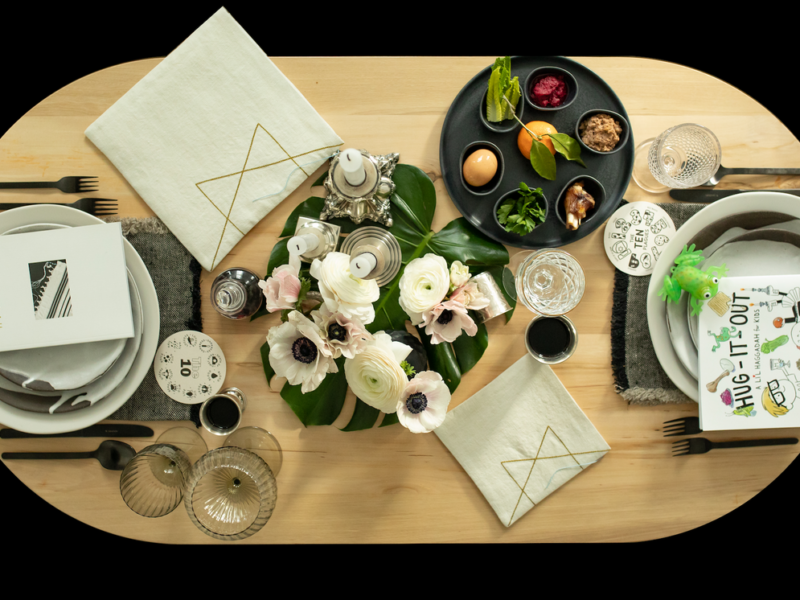One of the most famous buildings in Paris kept getting closer and closer. I couldn’t help but grin, as the Arc De Triomphe seemed to materialize right in front of me. To add to the excitement, I was in a cab that had a clear plastic roof, so I felt as if I was in a film with the energy of one of the most magnificent cities in the world surrounding me.
I had arrived — both literally and figuratively, because I was staying at the world famous Hotel Fouquet’s Barrière, located on the Champs Elysees. While the hotel has a modern décor, it believes in old-school sensibilities, as now I had my own private butler who could grant almost every wish.
Hotel Fouquet’s dedication to detail was fabulously outrageous. Prior to my arrival, I filled out a questionnaire asking me the types of flowers I liked, chocolate, drinks and even the type of bed and pillows I preferred.
I pinched myself. It was November, the sun was shining and I was walking down the Champes Elysees, heading toward the Louvre.
One of the charms of Paris is the fabulous art: from the grand structures like the Eiffel Tower to the tiny pieces of chocolate in the candy stores. Details are not overlooked, and perhaps it’s one of the reasons Paris is so magical.
The yellow and orange leaves lined the ground of the Tullerie gardens; it seemed to be a royal entrance. Partway through the park on rue de Rivolli is the Hotel Le Meurice, a perfect place for a coffee or a drink, as the bartender has concocted thousands, specially made simply by letting him know your tastes.
He reads his customers well; my special drink was a nonalcoholic tropical fruit. It was so over-the-top delicious,
I indulged in two!
After mixing with the glamorous people, I put on my walking shoes, as inside the Tuilleries Gardens is the Orangerie Museum. It is small, but boasts two rooms filled with Monet’s paintings of water lilies.
I spent the day wandering, and eventually found my way to the Notre Dame Cathedral. Behind it is the Memorial to the Martyrs of the Deportation, a place of remembrance of those deported to concentration camps during World War II. It is across rue de l’Archevêché, near square de l’Île de France.
A small gate leads to a memorial to an unknown World War II deportee. Inside are names of the German death camps, where 200,000 French men, women and children, Jews and Christians, were murdered.
My feet led me to the city’s most famous Jewish neighborhood, the Marais; it is known as the Pletzl – Yiddish for “little place.” This district has been home to Jewish people on and off since the 13th century. Today, it’s one of the city’s most fashionable quarters, with a Jewish population of significant size.
I couldn’t help but stop for a falafel on rue des Rosiers. The line was down the block on both sides, and needless to say, it was one of the best falafels I have eaten outside of Israel. The bakeries also demand attention, and one that found my favor was Korcarz, opened by Polish Holocaust survivors in 1948. The variety of pastries there was endless, from the mouthwatering Hungarian dessert dobosh (cream-filled cake) and baklava to cheesecake and apple strudel.
Time was well spent at the Shoah Memorial, which is free. Much of the tour I took was in French, but the pictures and videos made the obvious clear.
On a happier note, the Museum of Jewish Art and History was filled with interesting Judaica. It was fascinating to read about French Jewish history, especially the Dreyfus Affair (1894-1900), and its impact on the creation of the State of Israel.
Exhibits also include works by Paris-based Jewish artists Chagall, Modigliani and Soutine. Even the building where the museum is housed, in the 17th-century Hôtel De St-Aignan, has its own Jewish history and connections.
Paris is home to dazzling works of art, especially at the Musée d’Art Moderne de la Ville de Paris, which is housed in the eastern wing of the Palais de Tokyo. For hours, I marveled at the beauty and got lost in the phenomenal art of Pablo Picasso, Henri Matisse, Chaim Soutine and Mark Chagall. A painting by Raoul Dufy, called “The Fairy Electricity,” is one of the biggest in the world at 600 square meters. It fills an enormous room and is about the story of electricity over time. The painting was created to decorate the interior of the Palace of Light and Electricity at the 1937 International Exposition. It’s truly a masterpiece. The museum houses thousands of works of art and admission is free, although there is an entrance fee for special exhibits.
Paris by night is very romantic, and one of the best ways to experience it is by a BATEAUX evening boat cruise. Gliding down the Seine, you will see the Eiffel Tower, the French Statue of Liberty, Notre Dame and many other major sights visible from the river. During the three-hour adventure, sexy singers will croon to you at your table, where you can enjoy delightful food, and a fantastic photographer will record the magic of the night at your table — and even outside with Parisian icons, if you ask. It’s a movie-like experience, and while it’s always nice to have great weather, strangely, the Parisian light rain we experienced on the cruise only made it more enchanting.
Paris is a city for lovers — food lovers that is, and the choices are endless. One of the city’s best-kept secrets in fine dining is a restaurant inside Fouquet’s, Le Diane. It’s elegant, discreet and the experience there is like being in a James Bond movie — use your passkey to unlock doors inside the hotel that will lead you to a culinary delight.
This Michelin-rated restaurant boasts superior service and spectacular food, from the mouthwatering entrees to the desserts, the presentation, design and most importantly, the taste. Chef Jean-Yves Leuranguer’s restaurant is filled with culinary masterpieces as sweet and sensual as the city itself.
While French food is fabulous, restaurants that serve ethnic food are a must. For a flavor of the East, try the Shang Palace, which opened in last September in the Shangri-la hotel. The chef, Frank Xu, provides spectacular Cantonese food, which is not so typical for Paris, but everything on the menu is scrumptious, especially the eggplant. Soon after my visit, the restaurant was awarded its first Michelin star.
While in the Shangri-la hotel, be sure to stop by Le Bar for a drink. It’s charming, romantic and the drinks are first-class, even for someone like me, who drinks infrequently.
For traditional French food, one of my favorites is Chez Paul, on Rue de Lappe in the Bastille area, because the food is excellent and it’s been around for decades.
But if glamour is more your style and you are looking to see and be seen, Le Relais is chic, with an elegant but relaxed atmosphere. The brasserie, with its mouthwatering entrees and excellent service, is located inside the luxurious Plaza Athenee.
Paris is filled with history in its many hidden treasures which are waiting to be explored. Among those that touched me was The Nissim de Camondo Museum, once home to a Jewish family known as the “Rothschilds of the East.” The museum boasts breathtaking artwork, and the story of the families’ tragic end in Auschwitz is sure to, alas, also take your breath away.
Spending time in Paris viewing the outstanding art and exploring the over-the-top restaurants is akin to walking into a novel. The people are charming, especially if you break out a few simple words in French. From those I met in the hotels to the metros, most everyone I encountered was welcoming and helpful.
Masada Siegel is the author of the new novel “Window Dressings,” which can be found at masadasiegelauthor.com.





